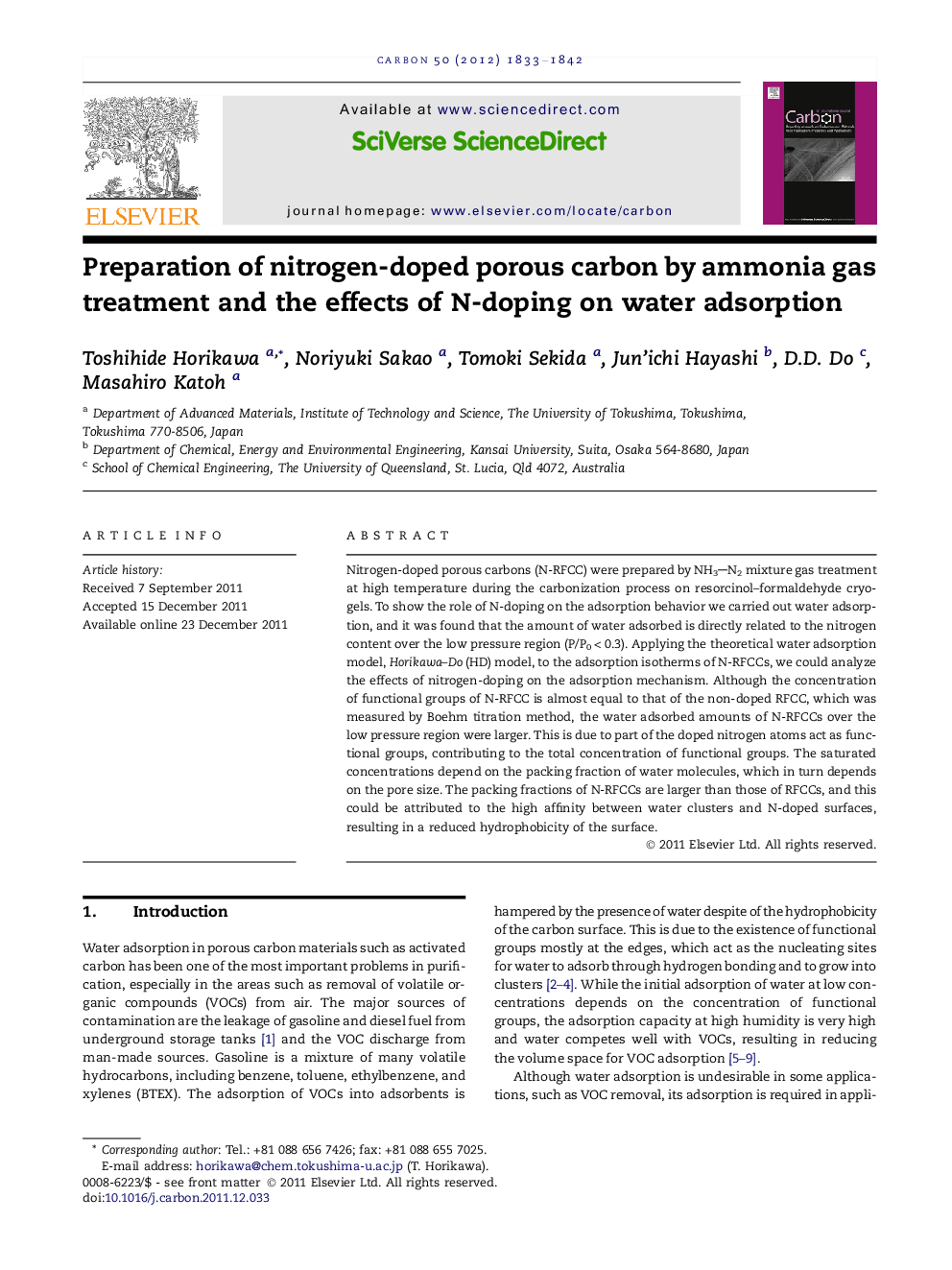| Article ID | Journal | Published Year | Pages | File Type |
|---|---|---|---|---|
| 1415649 | Carbon | 2012 | 10 Pages |
Nitrogen-doped porous carbons (N-RFCC) were prepared by NH3N2 mixture gas treatment at high temperature during the carbonization process on resorcinol–formaldehyde cryogels. To show the role of N-doping on the adsorption behavior we carried out water adsorption, and it was found that the amount of water adsorbed is directly related to the nitrogen content over the low pressure region (P/P0 < 0.3). Applying the theoretical water adsorption model, Horikawa–Do (HD) model, to the adsorption isotherms of N-RFCCs, we could analyze the effects of nitrogen-doping on the adsorption mechanism. Although the concentration of functional groups of N-RFCC is almost equal to that of the non-doped RFCC, which was measured by Boehm titration method, the water adsorbed amounts of N-RFCCs over the low pressure region were larger. This is due to part of the doped nitrogen atoms act as functional groups, contributing to the total concentration of functional groups. The saturated concentrations depend on the packing fraction of water molecules, which in turn depends on the pore size. The packing fractions of N-RFCCs are larger than those of RFCCs, and this could be attributed to the high affinity between water clusters and N-doped surfaces, resulting in a reduced hydrophobicity of the surface.
